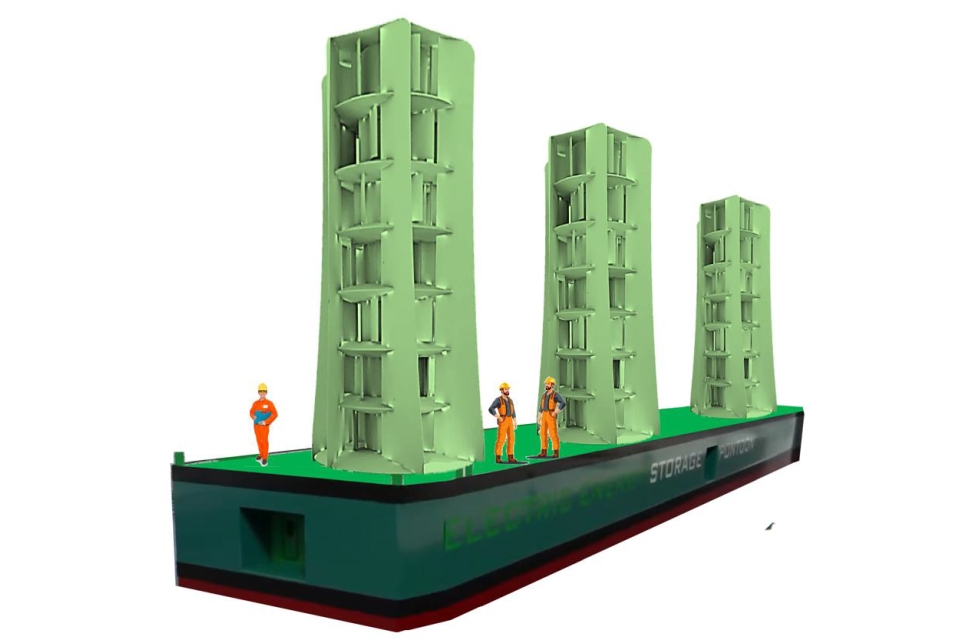PortLiner has presented an innovative solution that will be used to power its two zero-emission inland vessels. This flow battery bunker station will be equipped with onboard wind turbines, eliminating the need for onshore cables and traditional energy sources.
In early June, PortLiner announced plans for the construction of two 135 x 14.50 m (429 TEU) inland waterway ships of the PortLiner “DUTCH” design. The company has now received a recommendation from Lloyd’s Register for the concept flow battery on board these inland vessels, which allows zero-emission operations.
The ships will be equipped with a 1500 kW electrical main propulsion, and an 840 KW electrical bow thruster. The electrical energy will be provided by a flow battery from the Austrian manufacturer Cellcube-Enerox. The flow battery system will have a maximum output of 3×500 KW with an electrolyte energy storage of 10,000 kWh.
Also read: PortLiner to build two zero-emission inland ships
PortLiner bunker station
When announcing the plans for the ships, PortLiner also revealed it will develop its own infrastructure by building an “E-Storage” bunkering pontoon, which will be located in the Hartelkanaal in the Port of Rotterdam. The PortLiner ships will exchange the electrolyte by pumping the decharged electrolyte to the bunkeringstation and pumping the charged electrolyte to the ships. The ships can also be charged through a shore connection.
The company has now released more details of what this bunker station will look like. The station will be able to store electricity from various sources, including wind and solar. The pontoon will be equipped with its own wind turbines, supplementing the flow battery bunker station’s power generation.
These turbines have a capacity of 1 MWh, are 22.5 metres high, 10 metres wide, and have a lifetime of fifty years. Three such turbines will be placed on the pontoon. They are placed within a steel housing, with the turbines rotating on the inside.
Also read: CellCube and Portliner to build flow battery solution for all-electric inland vessel
The bunker station will have enough flow battery storage for more than fifty inland vessels. Key features are: High energy density and long duration storage, a scalable design to accommodate varying power demands, rapid charging and discharging capabilities and zero emissions. The minimum layout of the pontoon will be:
- Floating flow battery storage: 40 MWh
- Wind turbine capacity: 3 MWh
- Life time storage: up to fifty years
- Length: 76.5 metres
- Width: 11.5 metres

Advantages of the self-supporting bunker station include:
- Energy independence for vessels, eliminating reliance on onshore cables;
- Reduced carbon footprint through renewable energy generation;
- Cost savings by eliminating the need for traditional fuel sources;
- Increased operational flexibility and efficiency.
Both the ships and the pontoon will be certified by Lloyd’s Register against class Rules, ES-TRIN and ADN requirements.
Also read: SWZ|Maritime’s April 2022 inland navigation special: Bio-LNG, H2, CH3OH or with batteries








